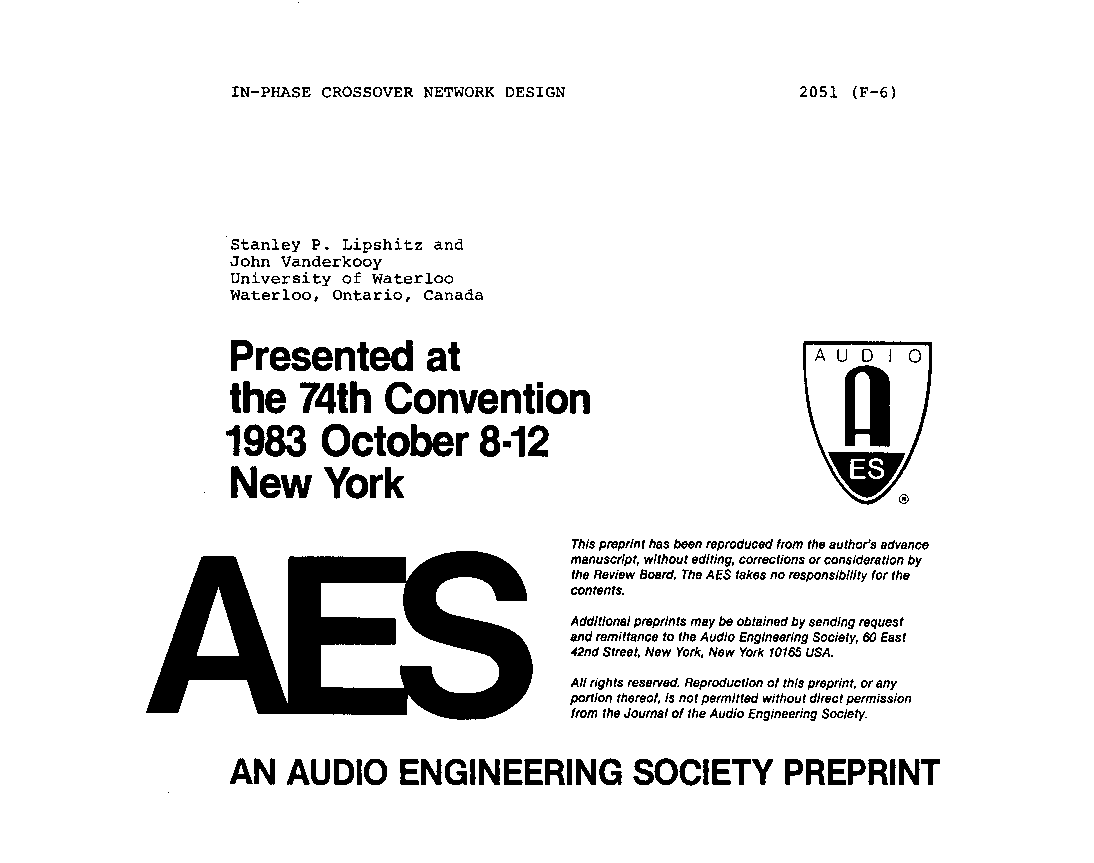Home / Publications / E-library page
You are currently logged in as an
Institutional Subscriber.
If you would like to logout,
please click on the button below.
Home / Publications / E-library page
Only AES members and Institutional Journal Subscribers can download
We consider crossover networks whose low- and high-pass outputs sum to unity magnitude, i.e., all-pass crossovers. Of these, the only known designs which have identical phase responses for both low- and high-pass sections, and thus provide optimal polar behavior, are the Linkwitz-Riley squared-Butterworth alignments. This is a most desirable property as the main lobe of the loudspeaker system`s output then shows no tilt through the crossover region. We show that the Linkwitz-Riley alignments are particular cases of a whole class of all-pass crossovers satisfying this condition. The designer has at his disposal the denominator polynomial of the all-pass transfer function to which the complete crossover network is equivalent. To this extent he has the freedom to trade off frequency response (i.e., roll-off) parameters against phase response (i.e., group delay) parameters without compromising polar behavior. The Linkwitz-Riley alignments are the frequency-symmetrical cases. These new crossovers, being subtractively derived, represent a variation on the authors` delay-derived crossover configuration.
Author (s): Lipshitz, Stanley P.; Vanderkooy, John
Affiliation:
University of Waterloo, Waterloo, Ontario, Canada
(See document for exact affiliation information.)
AES Convention: 74
Paper Number:2051
Publication Date:
1983-10-06
Import into BibTeX
Session subject:
Loudspeakers: Network Considerations
Permalink: https://aes2.org/publications/elibrary-page/?id=11713
(536KB)
Click to purchase paper as a non-member or login as an AES member. If your company or school subscribes to the E-Library then switch to the institutional version. If you are not an AES member Join the AES. If you need to check your member status, login to the Member Portal.

Lipshitz, Stanley P.; Vanderkooy, John; 1983; In-Phase Crossover Network Design [PDF]; University of Waterloo, Waterloo, Ontario, Canada; Paper 2051; Available from: https://aes2.org/publications/elibrary-page/?id=11713
Lipshitz, Stanley P.; Vanderkooy, John; In-Phase Crossover Network Design [PDF]; University of Waterloo, Waterloo, Ontario, Canada; Paper 2051; 1983 Available: https://aes2.org/publications/elibrary-page/?id=11713